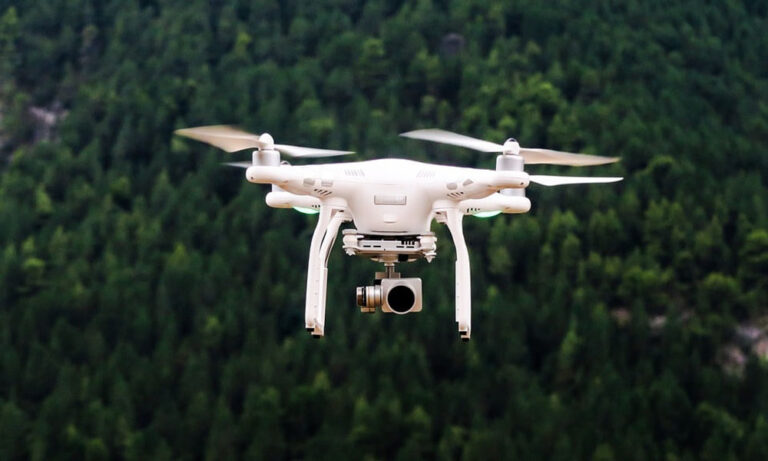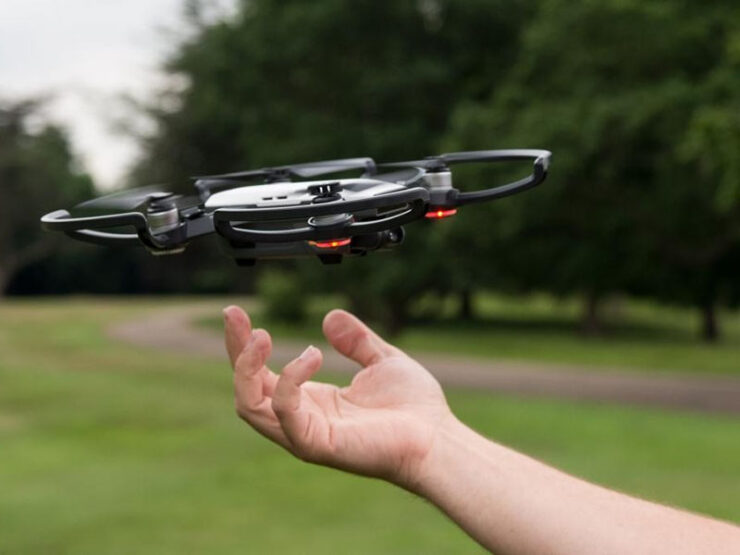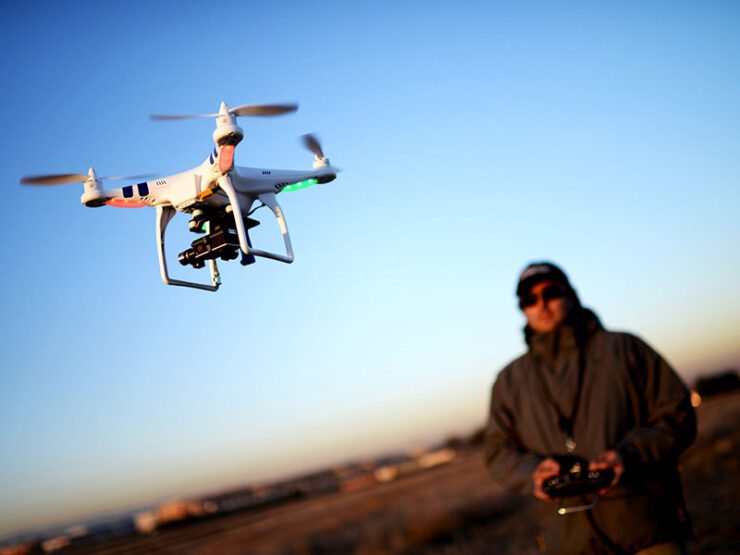So you’ve just picked up the latest and greatest camera drone and are all set to capture some awesome aerial footage! Or maybe you followed our tips from earlier reviews and picked a drone from
our best micro/budget drones article? This is the guide for you. Today we’re exploring how to fly a quadcopter or drone in a step by step way that will allow you to learn at your own pace, mastering the basics before moving onto more complicated flying.
Why is it important to learn how to fly properly? Some people reading this may already fly FPV or have an advanced GPS drone and may not see the point. But what happens when something fails, when your video feed goes down or you lose GPS? That’s when it is important to know how to fly properly and the ability to fly LOS could save you a very expensive drone crash and a long time making repairs.
So who’s this guide for? We have primarily targeted this guide at those with little to no experience, but if you haven’t flown for a while then following our progressive guide will allow you to get back up to speed quickly. If you already fly drones and are experienced with line of sight (LOS) or first person view (FPV), then look out for our advanced drone flying guide where we will be explaining how to make the most of your drone and how to pull off cool tricks!
We’re going to break this guide down into three main steps and each step has its own stages. We recommend that you are comfortable with every step in each stage before you move onto the next stage, this way you will make the most of each battery and have fewer broken props.
See more:
- Best Remote Control Helicopters For Kids
- Best Drones For Children
- Best Mini Quadcopter & Drone
- Best Pocket Drones
How to Fly a Quadcopter – The Guide
Stage 1 – Tail in Flying
In stage one we’ll be flying tail in, so with the front of the quad facing away from you. This allows you to control the quad without too much thought, as moving the stick left/right and forward/back will correspond to the same movement by the quad. The controls should be familiar to anyone who is used to playing video games as the analogue controls are very similar to the transmitter sticks.
There are two common modes of transmitters, which basically just have the throttle stick on different sides. Mode 1 has the throttle and yaw on the right, with pitch and roll on the left. Mode 2 is reversed, with throttle and yaw on the left. Mode 2 is the most popular and is what we fly, but we have kept the guide as clear as possible without referencing left/right sticks.
How to Hover Your Quadcopter
We’ll be starting by just learning to control the hover, with no movement side to side or back and forth for now. You may need to make very small adjustments to keep the quad still and account for small amounts of drift, but don’t worry about this too much and land the quad and move it back to the starting location if needed. The idea with learning to hover is gaining initial throttle control, which is very important if you expect to stay in the air! Hovering is an essential skill in learning how to fly a quadcopter so make sure to practice up on this step.
Once you can comfortably take off, hover in the same spot for a few seconds and then make a controlled landing, you’re ready to move onto step two.
Controlled Flying
Once you can hover, it’s time to get moving. Starting slowly, move forward and backwards, left and right to get a feel for how your quad moves. Begin flying in a square shape, stopping at each corner before moving along the next side.
If you overshoot the corners, stick at it and practice some more, it’ll come to you.
Speeding Up
The next step is moving quicker and learning to decelerate and stop on each corner. The aim here is to move with control, so if you find you are not moving in a neat square, slow down we’re not racing yet!
When you start moving faster, your quad will be at more of an angle and less of your thrust will be pointing down, keeping your quad in the air. This means that the faster you go, the more throttle you will need in order to maintain height. When you slow down or level out you will need to reduce your throttle to stop your quad from gaining too much height. Flying is a constant balance of throttle and the angle of your quad, so you will be using both sticks constantly.
By this stage you should be comfortable with how your quad reacts and how much stick input is needed to speed up and slow down. Maintaining a constant height is important in this stage, try to keep the quad at waist height. This not only makes seeing and controlling the quad easier, but means any crashes won’t hurt all that much.
Neat, fast squares? Time to move on to stage two!
Stage 2 – Flying Nose In
Here we’ll be flying nose in, learning to control the quad when it is facing towards you, but without turning just yet. Flying nose in makes things a lot more difficult as all of your control inputs are reversed. Take things really slowly at first and get used to what your sticks do when everything is reversed.
Moving Around Slowly
Just like we did when the quad was facing away, start slowly moving forward and backwards, left and right. Get used to the quad not moving the way it was before and start flying that square again!
It’s important to master this step, as when things start going wrong it’s unlikely your quad will be facing away from you. The last thing you want is to make your quad plough even faster into the tree it was already drifting towards.
It’s really important to keep nice and low during this step, as you’re more likely to crash than you were in the earlier steps.
Speeding up again
Take this step gently, even if you felt like you had the quad under control when flying slowly.
You know the drill by now! Speed up, slow down and stop at each corner before accelerating towards the next.
Once you’re comfortable it’s time to move on to stage three.
Stage 3 – Flying in All Orientations
Now you are comfortable with the simple left/right, forwards/backwards flight, we’ll move onto turning and basically maintaining forward flight rather than flying backwards.
Spinning
Start by hovering and using what you already know to keep the quad on the spot. Turn the quad on the spot, getting used to how much stick movement is required to rotate and how quickly it moves.
Turning
I know it’s boring but we’re going back to the square… This time it should be more fun as we’ll be flying forwards only. Each time you get to a corner, turn your quad so that it faces the next one and then start off again.
Change directions, completing laps both clockwise and anticlockwise. This is possibly one of the longest steps and getting things right is important, but once you’re ready to move on we’re nearly done.
Figure of eight
It’s time to pull everything together now and flying figure of eights is the perfect way. You’ll be turning in both directions, speeding up and slowing down, all whilst (hopefully) maintaining your height. The trick is to blend both your left and right sticks, combining yaw and roll to carry out smooth turns without stopping. You should aim to maintain your forward momentum through the turns rather than stopping like we did when flying squares.
Figure of eights are just the start, you now have the experience to fly in any orientation and make smooth turns. Flying higher, ascending and descending by making the most of your throttle control and cruising around should be a lot more fun now that you have proper control. This is the first step in learning how to fly a quadcopter with more advanced techniques. Be on the watch for an advanced technique article that we’ll be posting in the near future.
Final Pointers
Losing orientation and getting it back
When you start flying higher and further away, it is easy to lose orientation and this is when you lose your quad! If you do find your quad drifting away in a strong breeze, the first thing to do is bring it down a bit and try to get out of the wind. If your location allows, often the safest and easiest thing to do is slowly bring the quad down and land. If you’ve flown too far or are over trees, water or people/property (which you should never be doing!) then you need to get your quad back before landing. The first thing to do is remain calm and regain orientation.
Regaining orientation is the hardest part if your quad is far away. The easiest way is to fly straight forward for a short time and then turn to one side or the other until you see it flying left or right. You now know which way is forward and can bring the quad back home.
Crashing
If you are obviously going down or into a wall/tree, cut your throttle quickly. This will reduce the damage to your quad and you may be able to pick it up and fly straight away. If you keep the throttle up you may damage your props, but more importantly you could burn out a speed controller or motor, which could be the end of your quad if it isn’t modular and easy to repair.



